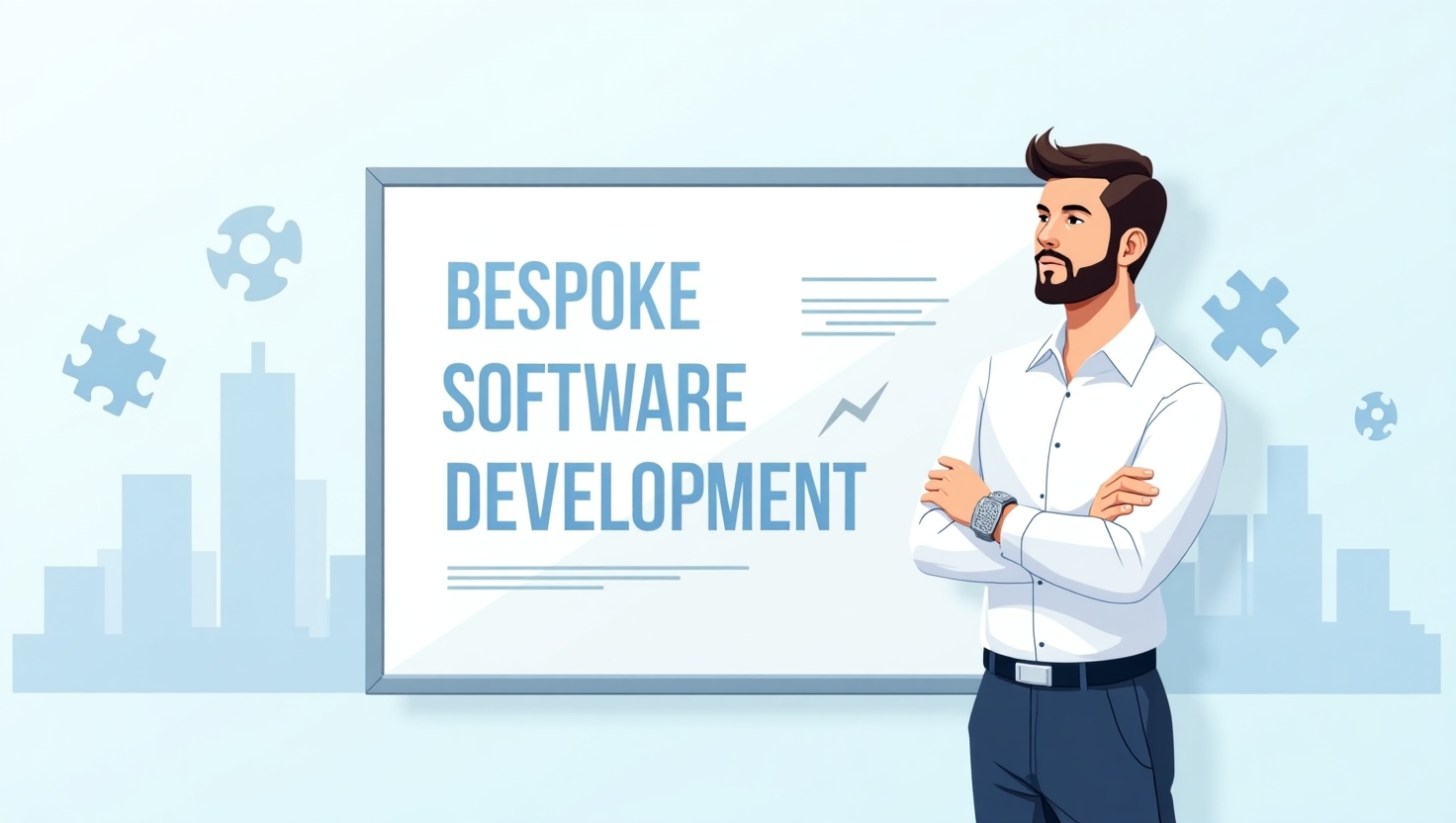How to Decide When Bespoke Software Development is Worth the Investment
Custom vs. Off-the-Shelf: How to Decide When Bespoke Software Development is Worth the Investment
In today's technology-driven business landscape, choosing between custom software and off-the-shelf solutions is a critical decision that can significantly impact your organization's efficiency, competitive advantage, and bottom line. While custom software development requires higher upfront investment, it can deliver tailored functionality that precisely meets your unique business needs. On the other hand, off-the-shelf solutions offer immediate implementation at a lower initial cost but may require compromises in functionality or workflow.
Understanding the Options
Custom Software Development
Custom software (also called bespoke software) is designed and built specifically for your organization's unique requirements. It's tailored to your exact business processes, integrates with your existing systems, and can evolve with your business needs over time.
Off-the-Shelf Software
Pre-packaged software solutions are designed for mass market appeal, offering standardized functionality that serves common needs across many organizations. They're ready to deploy immediately and typically come with regular updates and support packages.
Key Factors to Consider in Your Decision
1. Unique Business Requirements
Choose Custom When:
- Your business processes are unique or provide competitive advantage
- Your workflows don't fit standard templates
- You need specific functionalities not available in existing solutions
- You require seamless integration with proprietary systems
Choose Off-the-Shelf When:
- Your processes align with industry standards
- Your requirements are common across your industry
- The software category is mature with established solutions
- You need basic functionality that doesn't require customization
2. Time to Market
Choose Custom When:
- You have flexibility in your implementation timeline
- The perfect solution is more important than speed to implement
- You have a phased rollout plan
- You're investing in long-term infrastructure
Choose Off-the-Shelf When:
- You need an immediate solution
- Time to market is critical to your business objectives
- You need to demonstrate quick wins
- You're responding to urgent market or compliance pressures
3. Budget Considerations
Choose Custom When:
- You have capital budget for significant initial investment
- You can justify higher upfront costs for long-term value
- Operational efficiency gains will offset development costs
- You want to avoid ongoing licensing fees
Choose Off-the-Shelf When:
- Upfront capital is limited
- You prefer predictable subscription costs
- You can't justify extensive development costs
- You need to limit initial investment risk
4. Scalability and Growth
Choose Custom When:
- Your business is growing rapidly or changing direction
- You anticipate significant evolution in requirements
- You need control over your technology roadmap
- Your scaling needs are unique
Choose Off-the-Shelf When:
- Growth patterns are predictable and common
- The software vendor has a clear roadmap that aligns with yours
- Standard scaling options will meet your future needs
- You prefer to outsource technology evolution
5. Maintenance and Support
Choose Custom When:
- You have internal IT resources for ongoing maintenance
- You want complete control over updates and changes
- You require specialized security or compliance features
- You need flexibility to quickly adapt to changing requirements
Choose Off-the-Shelf When:
- You have limited IT resources
- You prefer vendor-managed updates and support
- You want to leverage external expertise for maintenance
- You need guaranteed service levels and support
Hidden Costs and Benefits to Consider
Custom Software Considerations
- Hidden Costs: Extended development time, potential for scope creep, ongoing maintenance
- Hidden Benefits: Intellectual property ownership, competitive differentiation, exactly matching business processes
Off-the-Shelf Considerations
- Hidden Costs: Customization fees, integration challenges, potential workflow compromises
- Hidden Benefits: Vendor handles updates and security patches, broader user community, established training resources
The Hybrid Approach: Getting the Best of Both Worlds
Many organizations find success with a hybrid approach:
-
Customizable Off-the-Shelf Solutions: Many vendors now offer platforms that provide core functionality with extensive customization options.
-
Custom Modules with Standard Core: Maintain standard software for common functions while developing custom modules for unique requirements.
-
Integrated Ecosystem: Combine multiple specialized off-the-shelf solutions with custom integration layers to create a cohesive ecosystem.
Case Studies: Success Stories
Custom Success: Financial Services Firm
A mid-sized investment management company invested in custom portfolio management software after finding that off-the-shelf solutions couldn't handle their unique risk assessment models. The custom solution reduced analysis time by 70% and became a key differentiator in client acquisition.
Off-the-Shelf Success: Retail Chain
A growing retail chain implemented an industry-standard ERP system rather than building custom software. By adapting their processes to industry best practices, they achieved implementation in 4 months instead of 18 and reduced training costs by leveraging existing skill sets in the job market.
Hybrid Success: Healthcare Provider
A regional healthcare network maintained core patient management systems using established healthcare software while developing custom telehealth solutions tailored to their rural patient population. This hybrid approach balanced reliability with innovation.
Decision Framework: A Step-by-Step Approach
- Assess Business Criticality: How central is this function to your core business value?
- Evaluate Uniqueness: How different are your requirements from standard industry practices?
- Calculate Total Cost of Ownership: Consider 5-year costs including licenses, customization, maintenance, and training.
- Analyze Competitive Advantage: Will custom capabilities provide meaningful differentiation?
- Evaluate Risk Tolerance: Consider your organization's ability to manage development risk.
- Assess Timeline Requirements: How quickly do you need the solution operational?
Conclusion
The decision between custom and off-the-shelf software is rarely black and white. The best approach often depends on your specific business context, growth trajectory, and competitive landscape. By carefully evaluating your unique requirements against the factors outlined above, you can make an informed decision that balances immediate needs with long-term strategic value.
Remember that software is an investment in your business's future. Whether you choose custom development, off-the-shelf solutions, or a hybrid approach, the right technology decisions should ultimately enable your organization to operate more efficiently, serve customers more effectively, and maintain competitive advantage in an increasingly digital world.
